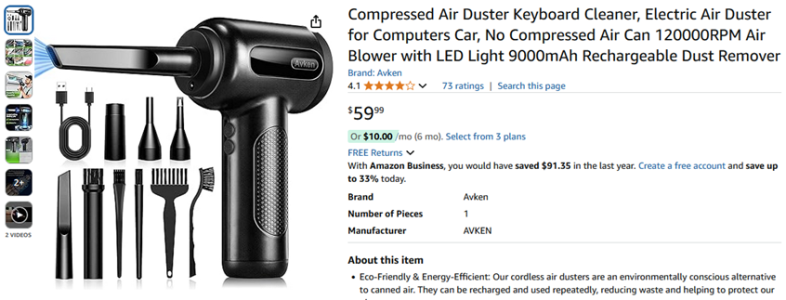I have canned air (only because it was free after rebate, years ago) and never use it.
I have an air compressor but usually don't use that either, for computers. What I normally do is use a paint brush to dislodge dust, then a cordless leaf blower at a distance. It has throttle control so I'm not giving the system a full strength blast, and being at a distance, and having already dislodged the dust with the paintbrush, it is gentle enough. I do this in the garage near the door so I can blow the dust outdoors, or just do it outdoors.
This includes opening the PSU and using the paint brush there as well.
However I seldom need to do this, as I no longer service other peoples' PCs, and my own have filtered intake so I'm just taking the filter panels out and vac'ing or washing those instead.
Sticky dust could need washed off, in a solution of whatever is appropriate to dissolve whatever the sticky contaminant is. If it is tobacco smoke, then a very mild ammonia solution works best, like dilute Mr. Clean, but be aware that ammonia will eat away at the anodization of any anodized aluminum parts, and you'd also want to remove fans, battery, and potentially more. I'd only start with ammonia solution if you're sure it is tobacco smoke tar, otherwise just regular hot dish detergent solution, and again a paint brush to gently scrub the component. I do a full immersion cleaning if wet cleaning, in a utility sink.
Getting any identification stickers wet may void any remaining warranties.
Some people are worried about getting electronics wet, not realizing that for many years manufacturers have used water soluble flux and (most of) the flux left behind is rinsed off as a manufacturing step.
Water or detergent solution cleaning, done properly, won't hurt most PC components. I wouldn't get it in an optical drive or HDD, but motherboard, video card, other cards, just make sure they are completely dry before applying power again, and if you get them wet at all, thoroughly rinse them, not just spot cleaning without rinsing as that can cause traces of the flux remaining on the PCB, to pool into acidic areas and form conductive metal salt deposits as it dries.



